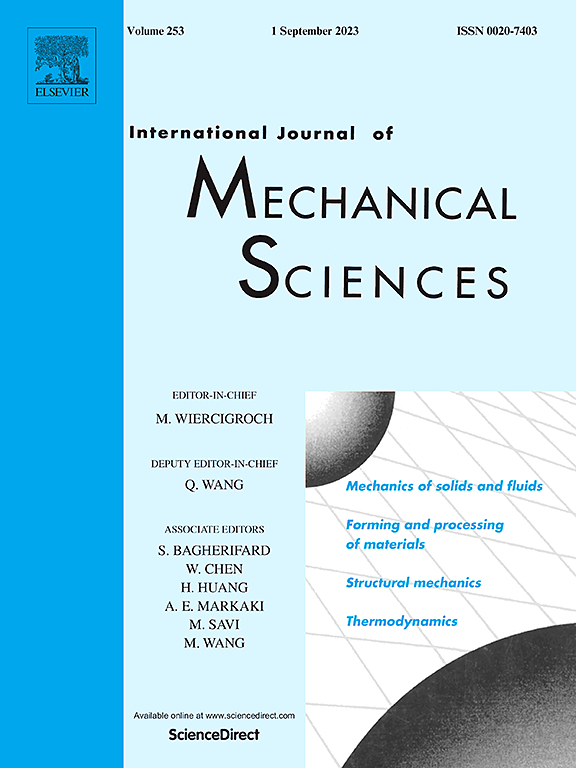Evaluation of fracture parameters for three-dimensional cracks by a hierarchical quadrature element method
IF 7.1
1区 工程技术
Q1 ENGINEERING, MECHANICAL
International Journal of Mechanical Sciences
Pub Date : 2025-02-01
DOI:10.1016/j.ijmecsci.2025.109954
引用次数: 0
Abstract
This work integrates the hierarchical quadrature element method (HQEM), which is known to have p-convergence, into the virtual crack closure method (VCCM) to evaluate fracture parameters for three-dimensional (3D) crack configurations. The prerequisite of the VCCM when dealing with 3D crack problems is the orthogonality of mesh arrangement in the vicinity of the crack front, which cannot be strictly met when traditional h-version finite element methods are employed. Compared with the h-version methods, one of the distinguished advantages of the HQEM is its simplicity in pre-processing, which is helpful to solve the difficulty of orthogonal mesh generation.
The technical details regarding the combination of HQEM and VCCM are illustrated in this work. Firstly, the method of generating higher-order mesh which strictly meets the orthogonality requirement is proposed. Then, a universal formula for crack closure integral is proposed for hexahedral hierarchical quadrature element, regardless of node arrangements and the number of nodes per element boundary. In addition, the subdomain integration technique is incorporated to estimate SIFs at a large number of subsegments along the crack front under a coarse mesh consisting of only a few elements. The effectiveness and accuracy of the present method are verified by several typical numerical examples, including through-the-thickness cracks, embedded elliptical cracks and semi-elliptical surface cracks. The results show that with only one or two elements arranged along the crack front, the present method is capable of easily and accurately obtaining the SIF distribution of 3D crack configurations with straight or curved crack fronts.

求助全文
约1分钟内获得全文
求助全文
来源期刊

International Journal of Mechanical Sciences
工程技术-工程:机械
CiteScore
12.80
自引率
17.80%
发文量
769
审稿时长
19 days
期刊介绍:
The International Journal of Mechanical Sciences (IJMS) serves as a global platform for the publication and dissemination of original research that contributes to a deeper scientific understanding of the fundamental disciplines within mechanical, civil, and material engineering.
The primary focus of IJMS is to showcase innovative and ground-breaking work that utilizes analytical and computational modeling techniques, such as Finite Element Method (FEM), Boundary Element Method (BEM), and mesh-free methods, among others. These modeling methods are applied to diverse fields including rigid-body mechanics (e.g., dynamics, vibration, stability), structural mechanics, metal forming, advanced materials (e.g., metals, composites, cellular, smart) behavior and applications, impact mechanics, strain localization, and other nonlinear effects (e.g., large deflections, plasticity, fracture).
Additionally, IJMS covers the realms of fluid mechanics (both external and internal flows), tribology, thermodynamics, and materials processing. These subjects collectively form the core of the journal's content.
In summary, IJMS provides a prestigious platform for researchers to present their original contributions, shedding light on analytical and computational modeling methods in various areas of mechanical engineering, as well as exploring the behavior and application of advanced materials, fluid mechanics, thermodynamics, and materials processing.
 求助内容:
求助内容: 应助结果提醒方式:
应助结果提醒方式:


